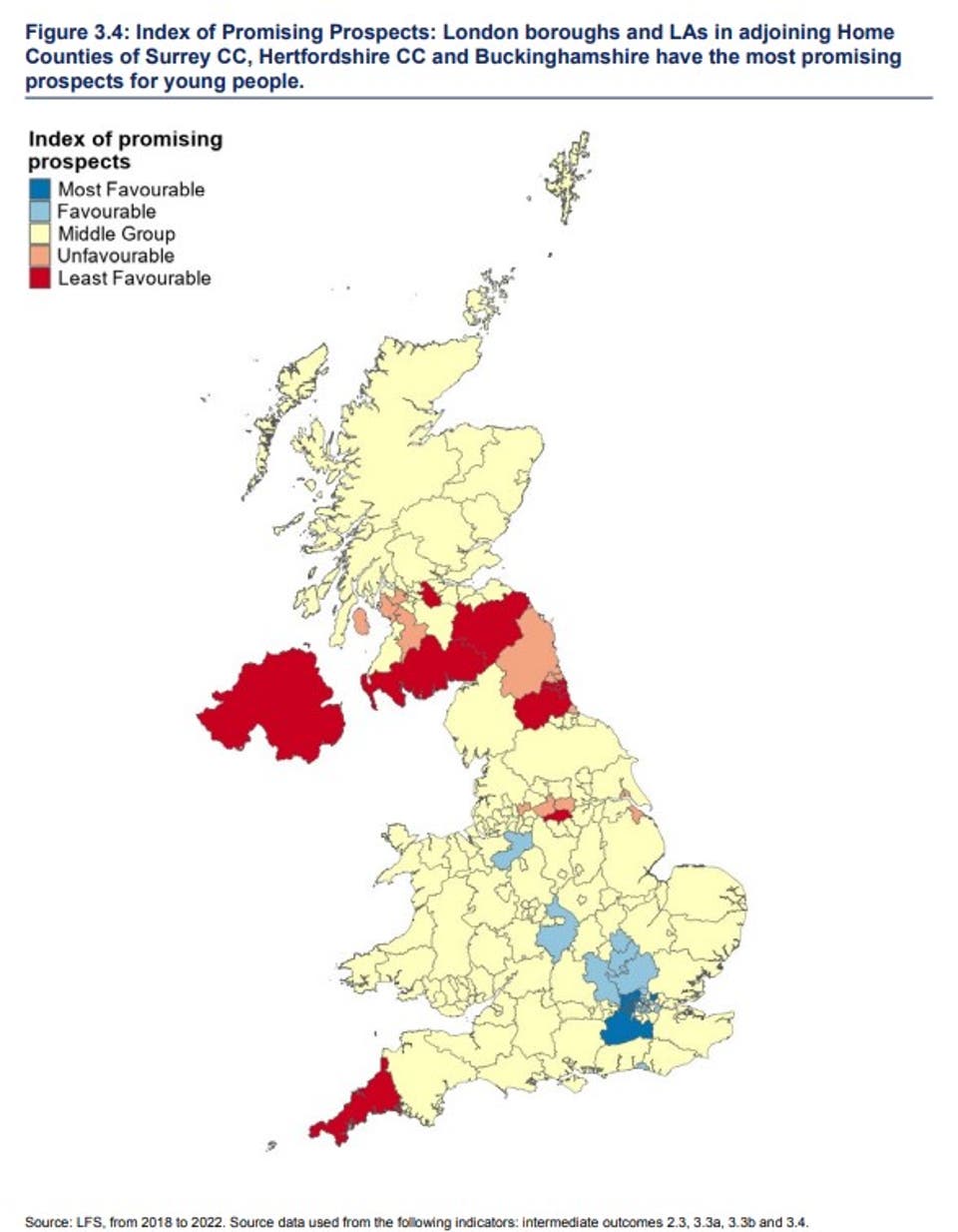More focus needed on ‘left behind’ people and places – Social mobility report

The best opportunities for high qualifications and professional well-paid jobs remain in London and the Home Counties, according to a major new report said to show “stark” regional divides which “scar” UK society.
Young people living in former mining, industrial and shipbuilding areas, as well as rural and coastal areas, have the lowest opportunities, the analysis of 203 local authorities found.
The state of the nation report highlighted what it described as post-industrial areas in the North East and North West of England, including Sunderland, Hull and Rochdale, and coastal and rural areas such as Cornwall and the Scottish Borders as being some of the worst for young people’s social mobility.

The research, by the Social Mobility Commission (SMC), concluded that young people growing up in these areas tend to end up with lower qualifications and lower pay.
They are more likely to end up in what it described as working-class jobs than young people from the same socio-economic background who grew up in parts of the country with better social mobility, the report said.
Social mobility is defined by the commission as the link between a person’s occupation or income and that of their parents, moving up or down through the generations.
The report covered local authority areas in England, Wales and Scotland, but did not provide a breakdown for different parts of Northern Ireland, instead treating it as a single area.
Parts of London, including Barnet and Ealing, as well as Surrey – known as one of the so-called Home Counties – were among those considered to have the most favourable outcomes in the report’s Promising Prospects table.

This looked at qualifications, hourly earnings and occupations, for those who grew up in the area, taking socio-economic background into account.
Areas with the least favourable outcomes by this measure included Gateshead in the North East of England, North Lanarkshire in Scotland and Northern Ireland.
The report said good transport links to big cities appear to be key to better social mobility, with areas around Manchester and Warwickshire, within commuting distance of Birmingham, having better opportunities for young people.
The findings expose the “highly unequal” landscape for young people depending on where they grow up and an “enduring lack of opportunity” in some areas, Oxford University sociology professor Anthony Heath said.
Lee Elliot Major, social mobility professor at the University of Exeter, said the divide is “much more than a simple north-south split: it is about London and the South East versus the rest”.
The commission’s chairman, Alun Francis, said there needs to be a focus on helping young people stuck in “left-behind places” with few opportunities.
In the foreword to the report, he said: “There are now several challenges in the UK which frame our social mobility problem, one of which includes insufficient attention to regional disparities and ‘left behind’ people and places. This is critical and needs urgent attention.”
There is no one-size-fits-all approach to improving opportunities, as each place has its own particular challenges
Alun Francis, Social Mobility Commission
Of the solutions, he said: “There is no one-size-fits-all approach to improving opportunities, as each place has its own particular challenges.
“A common theme is economic opportunity and the quality of jobs across the country, but there are also deeply entrenched issues around educational underperformance among families and communities which are more acute in some places than others.”
The commission has urged ministers to use approaches which are specific to a local area and its needs.
The report indicated there have been some areas of improvement, with unemployment levels among young people at the lowest they have been since 2014, at 11% in 2022 – the latest for which the commission said data was available.
It also said the socio-economic background gap for university enrolment has narrowed, with young people from higher professional backgrounds around twice as likely to enrol at university as those from lower working-class backgrounds in 2022, compared with being four times more likely to do so in 2014.
The authors also noted a closing of the earnings gap between young people with low qualifications and their more qualified peers, saying there had been a 16% increase in real hourly earnings for people with lower-level qualifications – below GCSE – between 2014 to 2016, and 2020 to 2022.
But the authors warn there is no room for complacency and pledged to monitor those trends.
Britain’s opportunity divide is much more than a simple north-south split: it is about London and the South East versus the rest
Social mobility professor Lee Elliot Major
Professor Heath said: “This analysis shows that young people’s prospects for upward social mobility remain highly unequal, and in some respects have deteriorated after the pandemic.
“Also worrying is the enduring lack of opportunity for young people in former mining, manufacturing and shipbuilding areas of the UK.
“New and sustained/able policy interventions will be needed if we are to improve the prospects for younger generations.”
Professor Elliot Major said: “Britain’s opportunity divide is much more than a simple north-south split: it is about London and the South East versus the rest.
“These results highlight the stark regional and local divides that scar our society. While the Government is rightly setting ambitious national targets for its opportunity mission, we should also seek to reduce disparities in poverty and life chances across the country.
“Our South West Social Mobility Commission is an exemplar of a more regional approach, identifying specific obstacles to opportunity in different parts of the country – for example, particular coastal and rural inequalities.”